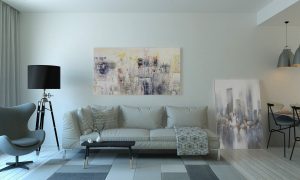🛋️German Level 1, Activity 06: Möbel und Wohnen / Furniture and Living (Face to Face)

Products: Furniture, Möbel, Apartments, Wohnungen, Houses, Häuser, Dormitories, Studentenwohnheime.
Practices: Understanding living standards and situations in German speaking countries. Lebensstandards und Situationen im deutschsprachigen Raum verstehen. Appreciating the differences in residences and furnishings. Schätzen Sie die Unterschiede in Wohnungen und Einrichtungsgegenständen.
Perspectives: Spatial and land restrictions determine the living situation in German-speaking countries. Räumliche und landwirtschaftliche Beschränkungen bestimmen die Lebenssituation im deutschsprachigen Raum.
NCSSFL-ACTFL World-Readiness Standards:
- Standard 1.1 Students engage in conversations, provide and obtain information, express feelings and emotions, and exchange opinions.
- Standard 1.2 Students understand and interpret spoken and written language on a variety of topics.
- Standard 2.1 Students demonstrate an understanding of the relationship between the practices and perspectives of the cultures studied.
Idaho State Content Standards:
- Objective: COMM 1.1: Interact and negotiate meaning (spoken, signed, written conversation) to share information, reactions, feelings, and opinions.
- Objective: COMM 2.1: Understand, interpret, and analyze what is heard, read, or viewed on a variety of topics.
- Objective: CLTR 1.1: Analyze the cultural practices/patterns of behavior accepted as the societal norm in the target culture.
- Objective: CLTR 1.3: Function appropriately in diverse contexts within the target culture.
NCSSFL-ACTFL Can-Do Statements:
- I can identify types of furniture and rooms.
- I can work within a budget to solve a problem, such as purchasing furniture for a room.
- I can follow a description to find a solution.
Materials Needed:
- Google Presentation
- Furniture Catalog (Images from Ikea.com)
- Whiteboard and Markers
Would you like to make changes to the materials? Access the template(s) below:
(Canva Template(s), free account required)
Warm-up
1. Begin by introducing the Can-Dos for today’s activity.
- Beginnen Sie mit der Einführung der Can-Dos für die heutige Aktivität.
2. Ask the following questions to introduce students to the vocabulary.
- Stellen Sie die folgenden Fragen, um die Schüler in den Wortschatz einzuführen.
- Do you live in an apartment, house, or dorm?
- Wohnt ihr in einem Haus, in einer Wohnung, oder in einer Wohngemeinschaft?
- Do you live with your parents, partner, or friends?
- Wohnt ihr mit euren Eltern, mit einem/er Partner/in, oder mit Freunden?
- Do you like to decorate your rooms?
- Dekoriert ihr eure Zimmer gern?
Main Activity
1. Pair up students and give each pair a corresponding furniture catalog.
- Paaren Sie die Schüler und geben sie jedem Paar einen entsprechenden Möbelkatalog.
2. The students choose which furniture they would buy based off the descriptions on the card and a 1000 euro budget.
- Ihr müsst mit einem/er Partner/in arbeiten. Ihr habt 1000€ um eure Studentenwohnung zu dekorieren.
3. There is no “right” answer, but students should take into account the price of each thing and their budget.
- Es gibt keine “richtige” Antwort, aber die Schüler sollten den Preis jeder Sache und ihr Budget berücksichtigen.
4. Once students are done have the pairs present their decisions to the group, including why they chose which pieces of furniture and how the furniture fits into the budget.
- Teilt uns mit was ihr gekauft habt und wie das mit dem Budget passt.
5. If students finish quickly they can switch cards and do the activity again.
- Wenn die Schüler schnell fertig sind, können sie die Aktivität mit anderen Karten wiederholen.
Wrap-up
Ask students the following question(s) to finish the activity:
1. Welche Möbelstücke mögt ihr am liebsten? (What was your favorite piece of furniture?)
2. Wo kauft ihr gerne Möbel? (Where do you like to buy furniture for your house/room?)
3. Was ist wichtiger, Qualität oder Preis? (What’s more important? Quality or price?)
End of Activity:
- Read Can-Do statements once more and have students evaluate their confidence. (Use thumbs up/thumbs down)
- Encourage students to be honest in their self-evaluation.
- Pay attention, and try to use feedback for future activities.
NCSSFL-ACTFL Can-Do Statements:
- I can identify types of furniture and rooms.
- I can work within a budget to solve a problem, such as purchasing furniture for a room.
- I can follow a description to find a solution.
Cultural Resources
Linked are two videos The first over various living accommodations in Germany and the second, apartment living in Berlin.
How to Remix a Pathways Project Activity
Feeling creative? The Pathways Project needs your help in remixing activities for the K-12 classroom.
Try taking an activity to the next level by:
- Add new content (something you’ve created or another OER source)
- Contribute additional activity suggestions
- Integrate authentic materials such as videos, infographics, photos, etc.
- Suggest how to implement the activity in the classroom
- Customize the content for a specific audience or group of learners (for example, K-5 learners or to differentiate for student’s needs)
We want to make it easy to share back with the larger Pathways Project Community! Simply, click this link to remix this activity.
Please consider sharing your remixed activity with us by emailing the activity link to Pathwaysproject@boisestate.edu so that Pathways continues to grow!

